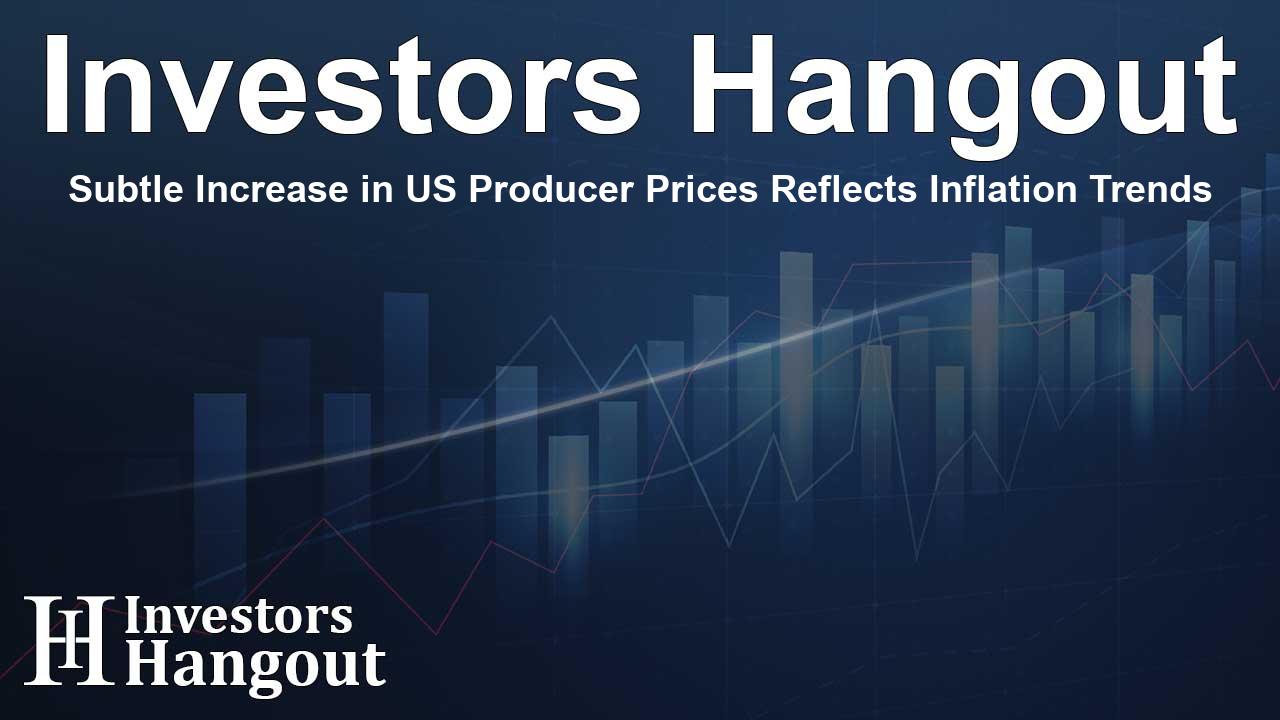Subtle Increase in US Producer Prices Reflects Inflation Trends

Understanding the Recent Changes in US Producer Prices
In the latest economic indicators, U.S. producer prices observed a slight increase in August, suggesting a shift in cost dynamics primarily driven by the service sector. This development is instrumental in understanding inflationary trends within the economy.
Key Insights from the Producer Price Index
The U.S. producer price index (PPI) for final demand recorded a 0.2% rise last month, as reported by the Labor Department's Bureau of Labor Statistics. This increase slightly exceeded economists' predictions, which anticipated only a 0.1% uptick.
July's Revisions and Expectations
This adjustment in August's figures follows a revision of July’s PPI, which was adjusted down to reflect no change rather than a slight increase. Economists closely monitor these statistics as they provide critical insight into price pressures that can extend to consumers.
Annual Trends in Producer Prices
Looking at the annual data, the PPI saw a 1.7% increase over the twelve months leading to August. This shows a decrease from July's 2.1% rise, indicating a gradual easing of inflationary pressures in the production side of the economy.
The Impact of Services on PPI
A significant factor contributing to the increase in the PPI was a 0.4% rise in service costs. In contrast, July had seen a decline, revealing the fluctuating nature of service prices. Specifically, a notable surge was observed in hotel and motel rates, which spiked by 4.8%, showcasing consumer demand in the hospitality sector. However, this was juxtaposed by a decline in airline fare prices, which fell by 0.8%.
Consumer Behavior and Pricing Power
Consumer behavior is playing a vital role in the current economic climate, especially as households push back against rising costs. This consumer resistance affects businesses' abilities to pass on higher costs to their customers, which in turn influences pricing strategies across various sectors.
Components Influencing the Personal Consumption Expenditures Index
Several components, such as portfolio management fees and accommodations, are critical for calculating the personal consumption expenditures (PCE) price indexes, which the Federal Reserve monitors closely while targeting a 2% inflation rate.
Goods Prices and Energy Sector Dynamics
Regarding goods prices, they remained stable in August after a previous rise. Energy costs fell by 0.9%, while food prices saw a marginal increase of 0.1%. When excluding food and energy data, goods prices rose by 0.2%, maintaining a similar trajectory seen in prior months.
Core PPI Insights
Analyzing the core PPI, which excludes food and energy, the measure climbed 0.3%, consistent with gains from July. Year-on-year, this core metric indicated a 3.3% increase, a slight rise from the 3.2% recorded in July. Such figures are pivotal as they signal underlying inflation trends excluding more volatile price sectors.
The Path Forward: Federal Reserve Considerations
The developments in producer prices come against a backdrop of shifting monetary policy. With cooling inflation pressures and a slowing labor market, the Federal Reserve is positioned to initiate policy adjustments in the near future, including a projected rate cut. This could greatly influence the broader economic landscape.
Frequently Asked Questions
What does a rise in producer prices indicate?
An increase in producer prices often suggests that manufacturing and service costs are rising, which can lead to higher consumer prices and inflation.
How do producer prices affect consumers?
When producer prices increase, companies may pass those costs onto consumers, resulting in higher prices for goods and services.
Why is the core PPI important?
The core PPI is significant because it provides a clearer picture of long-term inflation trends by excluding volatile items like food and energy.
What role does the Federal Reserve play in managing inflation?
The Federal Reserve manages inflation primarily through monetary policy, adjusting interest rates to influence economic activity and price stability.
What factors influence producer prices?
Producer prices are influenced by various factors, including supply chain dynamics, labor costs, energy costs, and consumer demand in different sectors.
About Investors Hangout
Investors Hangout is a leading online stock forum for financial discussion and learning, offering a wide range of free tools and resources. It draws in traders of all levels, who exchange market knowledge, investigate trading tactics, and keep an eye on industry developments in real time. Featuring financial articles, stock message boards, quotes, charts, company profiles, and live news updates. Through cooperative learning and a wealth of informational resources, it helps users from novices creating their first portfolios to experts honing their techniques. Join Investors Hangout today: https://investorshangout.com/
Disclaimer: The content of this article is solely for general informational purposes only; it does not represent legal, financial, or investment advice. Investors Hangout does not offer financial advice; the author is not a licensed financial advisor. Consult a qualified advisor before making any financial or investment decisions based on this article. The author's interpretation of publicly available data shapes the opinions presented here; as a result, they should not be taken as advice to purchase, sell, or hold any securities mentioned or any other investments. The author does not guarantee the accuracy, completeness, or timeliness of any material, providing it "as is." Information and market conditions may change; past performance is not indicative of future outcomes. If any of the material offered here is inaccurate, please contact us for corrections.